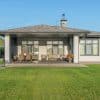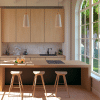Access Doors are an essential facet of any building. These doors permit you to certain areas and utilities that you should keep away from the general public. Examples include gas and water lines, electrical wiring, or HVAC ducts. While you certainly want to protect these utilities, keeping them accessible to your maintenance personnel is also best practice.
Choosing the right access door for your needs is not an easy task. You’ll need to consider these several factors in selecting the best access door for you.
Where will the Access Door go?
When looking for an access door, you must consider where you’ll be placing it. While access doors are generally versatile, some are better suited for specific settings than others.
If it’s for outdoor applications, you’ll need to find one specifically designed to handle the elements. Maybe you’re looking for one to fit your gypsum ceilings. For this, you can consider general-purpose gypsum access panels. These gypsum panels are lightweight and can be textured easily, making them blend in with the rest of your gypsum ceiling for a near flawless look.
Is the Aesthetic Important?
You may be looking for an access door to suit the aesthetics of a particular room. Aside from gypsum, other access doors that suit your drywall are also available. On top of this, many manufacturers also create access doors that hide the hinge and flange.
With just a bit of research, you’ll indeed have your space looking perfect soon.
Is Sustainability Important?
Your client may be looking to create an eco-friendly building, and they may be looking to have their building LEED Certified. Thankfully, you can readily find access doors that go towards LEED Credits.
By going with LEED Certified access doors, your clients will have an easier time claiming their sustainability goals.
What Material Will It Use?
The two most common materials for access doors are Aluminum and Stainless Steel. Aluminum would be the more cost-effective solution for you, and it offers natural corrosion resistance — perfect for all-purpose applications.
If you need extra security and durability, consider going for Stainless Steel access doors. You’ll typically see these for medium to high-security applications (such as in jails and psychiatric facilities) and used for floor-mounted access doors.
Needing Extra Security?
You’ll likely see access doors with either a knurled knob or screwdriver latch, making maintenance work quicker. However, you can easily find access doors with locks to fit into higher security settings.
It can be as simple as moving from a screwdriver latch to a hex head cam latch. If the manufacturer features this, you can also ask for a key-operated cylinder lock or have preparation work done to fit a mortise lock.
Is Fire-Safety Important?
Equipping your building with only the best fire safety measures is essential. Access doors help with fire safety by acting as a part of your passive fire protection system. Passive fire protection allows for safer evacuation. It helps your occupants in a fire by limiting the spread and damage of the fire for a certain amount of time,
It’s important to note that no access door is fire-proof. Instead, fire-rated access doors hold off fires for a specific time. You’ll also need to follow the detailed installation guide and use the specified hardware, as any unauthorized changes may compromise the fire rating.
Always Make An Informed Decision
With clients’ high investments in the building, you need to equip them with only the best access doors. Access door selection is an important decision, and there are many factors to consider when choosing the right one. Hopefully, you’ll be able to find one that’ll fit right in your next construction project.








